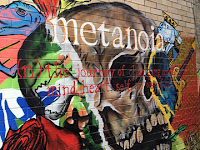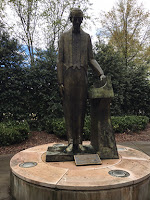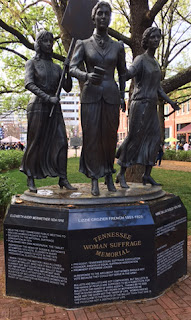The symposium brought together people from different units and different universities, discussing how we use design thinking to improve teaching, learning, and the supporting infrastructure at our institutions.
 |
| Avenue of Learning |
Of course, all of this renovation also means adding new technologies to the spaces, and while we did not see a lot on this trip, I discovered Wolfvision's Cynap, a system that works across different OS, similar to some of the systems we have added to classrooms.
Julie Little, in her talk on Designed to Engage: Learning Space to Advance Learning Success, reminded us that we need to move away from the binary position of formal and informal learning spaces -- the two should not be exclusive from each other, both in design and functionality. She reminded us to be relentless in our pursuit of student and learner success. Here is one of these different ways of formatting such spaces, an individual study space made to be added to a crowded area:
 |
| comfy study corner |
Taimi Olsen reminded us that when you design a new activity in your class, you should work through it yourself to ensure that it indeed does what you think it will do.
Cary Staples and Sebastien Dubreil showed off their amazing project of students learning French by designing computer games and apps in French. You can try Bonne Chance online.
Tennessee Tech Engineers discussed their undergraduate teaching model of the Renaissance Foundry model that made students the composers and connect them to real problems, with the understanding that in order to be successful, the model needs to include effective learning spaces.
Dave Matthews led us on Friday through an intense Design Thinking workshop that focused our attention on the dimension of psychological safety in groups. The reading of What Google Learned From Its Quest to Build the Perfect Team and the viewing of Amy Edmondson's Building a psychologically safe workplace made us more aware of the existence and importance of this safety and it allowed us to design, through a design thinking process, to develop learning activities that will empower students.
Here some other nuggets from this workshop:
- Language reflects past and present but is difficult to use to tell the future, so the use of analogies and metaphors becomes important
- Fear stops learning
- Transform existing into preferred conditions (Herb Simmons)
- Design takes you where you have not been before
 |
| Knoxville Chocolate Company |
Some other angles on what is necessary to learn: chocolate -- and they have good chocolate at the Knoxville Chocolate Company:
 |
| graffiti |
 |
| Rachmaninoff |
 |
| Rachmaninoff |
 |
| Tennessee suffragettes |
 |
| Tennessee suffragettes |
No comments:
Post a Comment